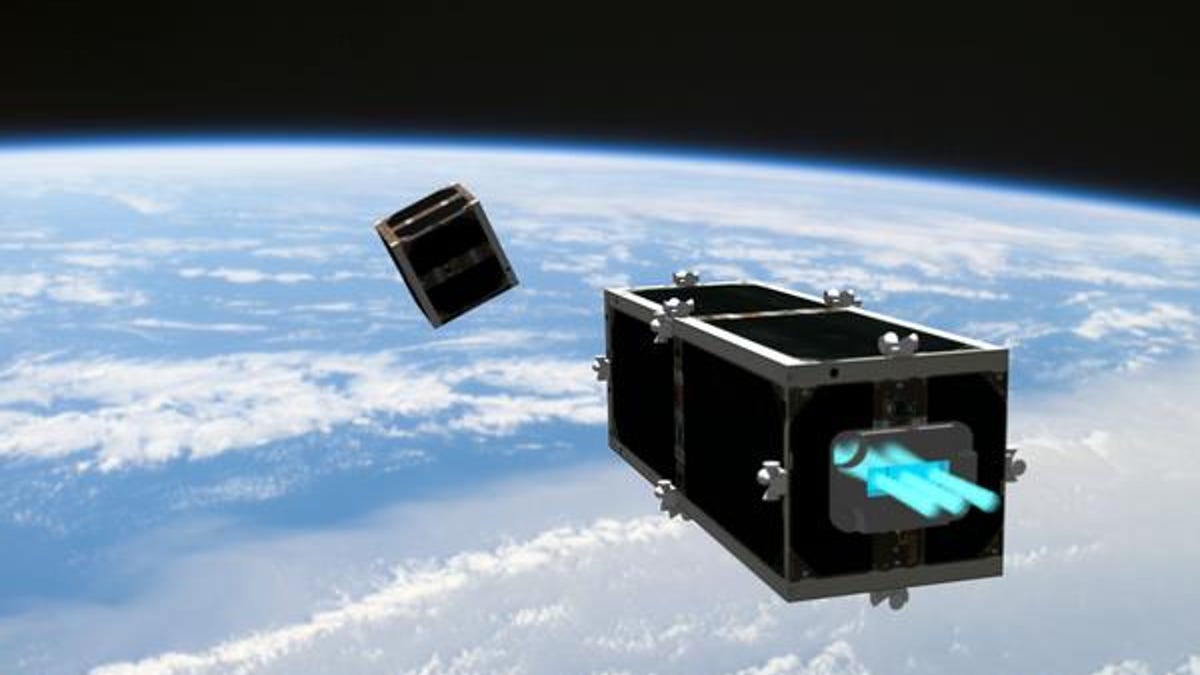Can this 'janitor satellite' clean up space junk?
An $11 million machine under development at the Swiss Space Center aims to tidy up space debris in the near heavens.

Swiss scientists believe they have a solution to help tidy up the junkyard of satellites over our heads.
It's called CleanSpace One and it's designed to tackle the 17,000-mph mess we've made around our planet.
The $11 million "janitor satellite" is under development at the Swiss Space Center in the Swiss Federal Institute for Technology (EPFL). Its target: derelict satellites 430 miles up that threaten our communications and information networks.
There are some 16,000 bits of debris in the near heavens that are larger than 4 inches across. They're mostly satellite and rocket components hurtling around like hornets in a bag, and they can also endanger the lives of astronauts. The International Space Station has to adjust its orbit to get out of the traffic.
When space junk collides, it only compounds the problem. Three years ago, U.S. and Russian satellites collided over Siberia, generating an estimated 1,000 pieces of new debris at least 4 inches across.
CleanSpace One would launch in three to five years. As seen in the vid below, it would go about grabbing a target satellite with a robotic arm or other mechanism and forcing it back toward Earth, where both would burn up on reentry.
The first things in its crosshairs would be either the Swisscube satellite launched in 2009, or TIsat, a Swiss satellite that went up in 2010.
But engineers have to solve several problems to get the janitor to work properly. CleanSpace One has to get onto the same orbital plane as its target, latch onto it at high speed, and then de-orbit it.
EPFL labs is working on an "ultra-compact motor" to get the janitor onto the right track, as well as a grasping mechanism that would work when the two objects are traveling at more than 17,000 mph and one is rotating; plant or animal models could be used as an inspiration.
So far, CleanSpace One would be a one-shot deal, with each successor going up into orbit for a single capture mission. That would mean a heck of a long time before multiple satellites can make a dent in the floating junkyard.
Apart from using a ground-based laser, it seems that a more practical solution is to build sustainability into satellite and rocket design.
After all, why should we litter up above if we don't do it here on Earth?

